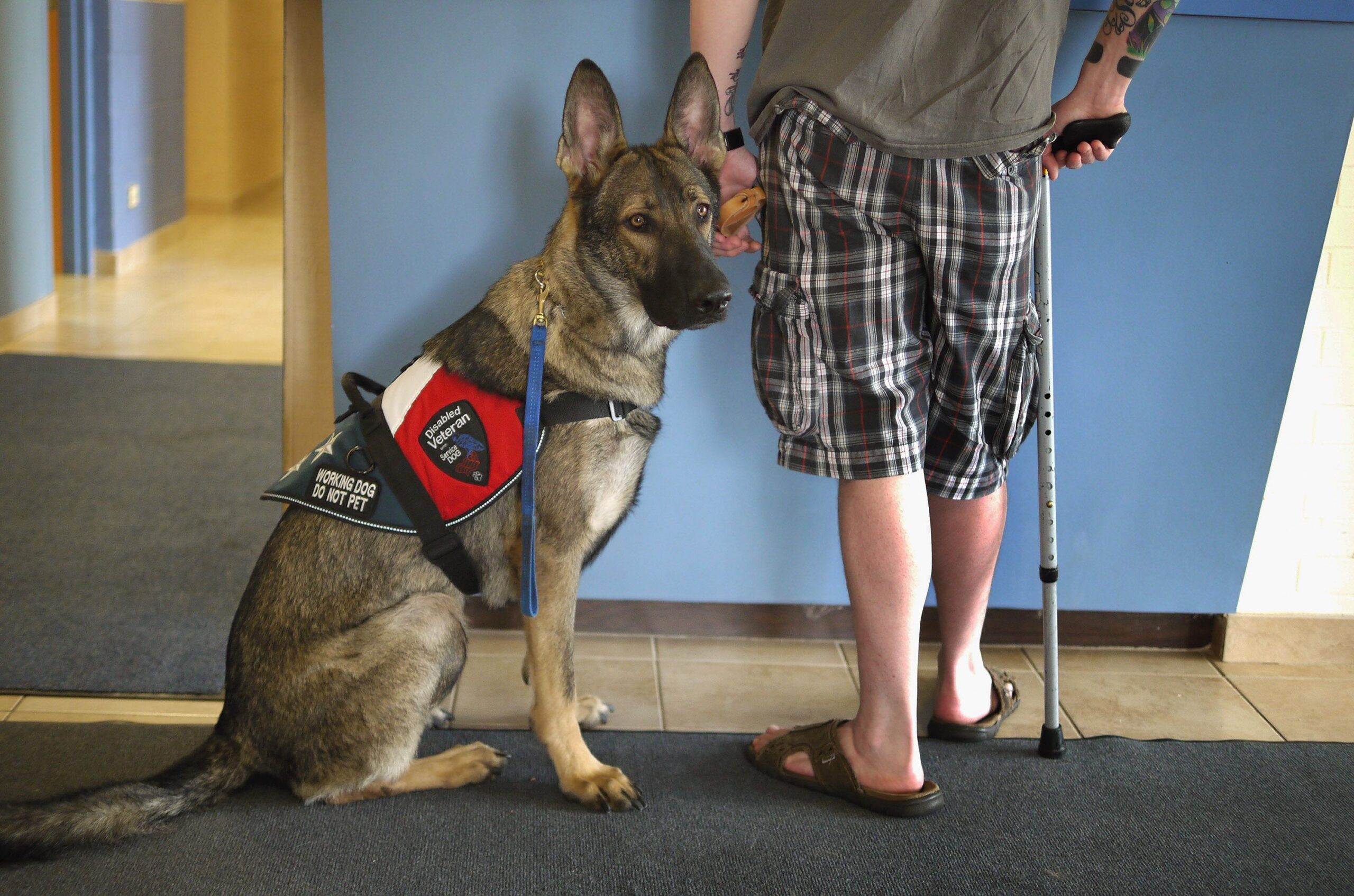The notion of service dogs as noble companions often elicits images of steadfast loyalty and unwavering support. However, beneath the veneer of altruism lies a convoluted tapestry of existential quandaries: do these extraordinary animals experience suffering, and what ramifications does this have for our understanding of animal welfare? Exploring this question necessitates a thorough examination of the multifaceted relationship between service dogs and the human beings they assist.
To begin, one must acknowledge the rigorous demands placed upon service dogs. These canine companions are not mere pets; they are highly trained service animals equipped to perform specific tasks that mitigate the challenges faced by individuals with disabilities. From guiding the visually impaired to alerting those with hearing impairments or even detecting impending medical crises, their roles are pivotal. While the beneficiaries of their services often revel in newfound independence, the attention ought to extend to the canine counterparts dedicated to this cause.
Consider the metaphor of a double-edged sword. Just as the blade possesses the dual capacity to protect or harm, the duties of service dogs can engender both fulfillment and distress. On one end, they offer indispensable aid to their human partners. Yet, on the flip side, the constant demand for precision and vigilance can be taxing. This dichotomy compels us to interrogate the welfare standards that govern the treatment of service dogs. Are they merely tools serving a functional purpose, or do they embody sentient beings deserving of nuanced care and consideration?
A pivotal aspect of this discourse revolves around training practices. The rigorous training regimes instill obedience and task proficiency, often at the expense of the dogs’ natural behaviors and socialization impulses. Puppies might spend their formative months enduring prolonged training sessions, which can be both mentally and physically taxing. The question invariably surfaces: are we conditioning these dogs to excel in their roles, or are we, in some cases, eradicating their inherent traits of joy and playfulness?
Moreover, service dogs often navigate complex social environments wherein their capabilities are continuously assessed. They embody the role of unsung heroes yet bear the weight of expectation. Their status as service animals confers upon them an aura of stoicism, which may obscure their emotional needs. While training emphasizes functionality, it can inadvertently mask signs of distress, anxiety, or fatigue. When a dog is seen as an extension of its handler’s abilities, their emotional well-being becomes secondary—a troubling notion for those advocating animal rights.
Furthermore, the physical toll on service dogs cannot be overlooked. The canine body, although resilient, is not invulnerable. The demanding nature of their roles may result in chronic injuries or health complications. Consider the service dog tasked with mobility assistance: the strain of supporting a human’s weight can lead to musculoskeletal disorders. Such an outcome is a poignant reminder that, in our quest to enhance human capability, we must remain vigilant about the potential detriment to the animals tasked with such daunting responsibilities.
As we navigate this labyrinth of service dog welfare, it becomes imperative to adopt a holistic view that considers the well-being of the dogs alongside their life-changing roles. The solution lies in redefining what welfare means in this context. Traditional welfare measures often hinge upon basic needs—food, shelter, and veterinary care. However, such criteria remain insufficient when evaluating the complex emotional and psychological landscapes inhabited by service dogs. The cultivation of mental well-being is paramount; these dogs must be afforded opportunities for play, social interaction, and periods of rest that allow them to recharge.
The conversation must also include the voices of the handlers who can illuminate the nuanced spectrum of their service dogs’ experiences. Encouraging open dialogues about the challenges they face as handlers, coupled with the struggles of their canine counterparts, can foster a more comprehensive understanding of the welfare dynamics at play. By forging stronger partnerships with veterinarians, trainers, and animal behaviorists, handlers can create more supportive environments for their service dogs, ones that prioritize emotional health alongside functional performance.
In effect, creating a systemic shift in how we regard service dog welfare entails a reevaluation of our assumptions. It requires embracing the idea that these dogs are not just adjuncts to human life—rather, they are sentient beings with unique emotional and psychological needs. This paradigm shift could catalyze a new wave of advocacy aimed at enhancing the lives of service dogs, ensuring that the very animals trained to serve humans are afforded the dignity and care reflective of their contributions.
In conclusion, as society moves towards a deeper understanding of animal cognition and emotion, we must abandon narrow definitions of purpose that overlook the intrinsic worth of service dogs. Reconsidering their experiences through the lens of compassionate welfare could lead to more humane training practices, better health care, and an acknowledgment of their rightful place as valued members of our community. Service dogs, in all their unwavering dedication, remind us that true assistance transcends functional limitations—it is about fostering a relationship grounded in mutual respect, care, and understanding.








